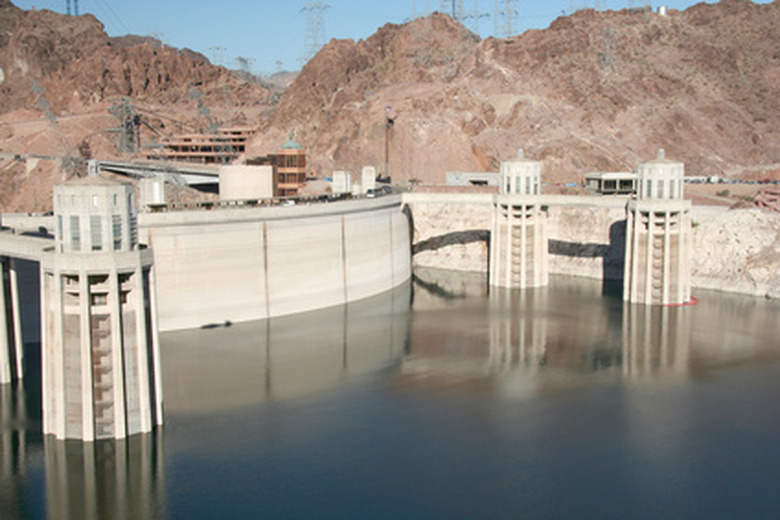How To Calculate Water Wheel Power
Tremendous potential energy exists in falling water, which is the basis of hydroelectric plants. Falling water can be from a waterfall or moving down a stream because of changes in elevation. Hydroelectric plants tap into this potential energy by forcing the water to move a large water wheels that are connected to turbine generators. The power of generated can be calculated the the height and flow of the water.
Step 1
Acquire the necessary data. You will need the net head and the flow-rate.
The net head is the distance from the source of the falling water to the water wheel. This figure is usually degraded twists and turns in the flow and friction rates. These degradations can be referenced for an estimated net head measurement. This is usually measured in meters or feet.
The flow rate is the volume of water moving onto the water wheel per unit time. This is usually measured in liters per second, cubic meters per second or cubic feet per second.
Step 2
Multiply the net head distance in meters times the flow rate in liters per second times 9.81, which is the acceleration due to gravity, measured in meters per second. This calculates the hydro power in watts. As an example, If the net head was 20 meters with a flow rate of 25 liters per second, then the hydro power would be 20 times 25 times 9.81, or 4,905 watts.
If you are using feet, then the formula changes slightly to factor in the conversion. In this case, multiply the head in feet times the flow rate in cubic feet per second times the conversion factor of 84.6 to calculate hydro power in watts.
Step 3
Multiply the hydro power by the unit's efficiency rating, usually listed as a percentage in its specifications. In the example, if you had an efficiency rating of 60 percent, then you would divide that number by 100 to convert it to decimal format. Then multiply that number by the hydro power of 4,905 watts to calculate the water wheel's power of 2,943 watts.
Cite This Article
MLA
Taylor, C.. "How To Calculate Water Wheel Power" sciencing.com, https://www.sciencing.com/calculate-water-wheel-power-7604567/. 24 April 2017.
APA
Taylor, C.. (2017, April 24). How To Calculate Water Wheel Power. sciencing.com. Retrieved from https://www.sciencing.com/calculate-water-wheel-power-7604567/
Chicago
Taylor, C.. How To Calculate Water Wheel Power last modified March 24, 2022. https://www.sciencing.com/calculate-water-wheel-power-7604567/
